
Veit Harlan was a German film director and actor. Harlan reached the highpoint of his career as a director in the Nazi era; most notably his antisemitic film Jud Süß (1940) makes him controversial. While viewed critically for his ideologies, a number of critics consider him a capable director on the grounds of such work as Opfergang (1944).

The Great King is a 1942 German drama film directed by Veit Harlan and starring Otto Gebühr. It depicts the life of Frederick the Great, who ruled Prussia from 1740 to 1786. It received the rare "Film of the Nation" distinction. It was part of a popular cycle of "Prussian films".
The Immortal Heart is a 1939 German drama film directed by Veit Harlan and starring Heinrich George. It was based on Walter Harlan's play The Nuremberg Egg and depicts the inventor of the watch, Peter Henlein.

The Ruler is a 1937 German drama film directed by Veit Harlan. It was adapted from the play of the same name by Gerhart Hauptmann. Erwin Leiser calls it a propagandistic demonstration of the Führerprinzip of Nazi Germany. The film's sets were designed by the art director Robert Herlth. Location shooting took place around Oberhausen and Pompeii near Naples. It premiered at the Ufa-Palast am Zoo in Berlin.

The Journey to Tilsit is a 1939 German drama film directed by Veit Harlan and starring Kristina Söderbaum, Philip Dorn and Anna Dammann.
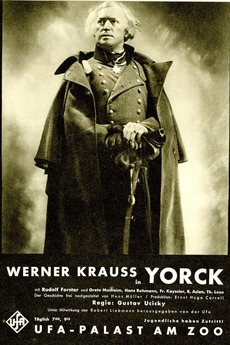
Yorck is a 1931 German war film directed by Gustav Ucicky and starring Werner Krauss, Grete Mosheim and Rudolf Forster. It portrays the life of the Prussian General Ludwig Yorck von Wartenburg, particularly his refusal to serve in Napoleon's army during the French Invasion of Russia in 1812. It was a Prussian film, one of a cycle of films made during the era that focused on Prussian history.

The Eleven Schill Officers is a 1932 German historical film directed by Rudolf Meinert and starring Friedrich Kayßler, Hertha Thiele, and Heinz Klingenberg. It was a remake of a 1926 silent film of the same name which had also been directed by Meinert. The film depicts the failed 1809 uprising of Prussian soldiers led by Ferdinand von Schill against the occupying French. It focuses in particular on eleven of Schill's officers who were executed by the French at Wesel. The film was a Prussian film, part of a wider trend of German historical films made during the Weimar Era and set in the Napoleonic Era.

Somnambul is a 1929 German silent horror film directed by Adolf Trotz and starring Fritz Kortner, Erna Morena and Veit Harlan. The film is set against the backdrop of spiritualism. The Berlin clairvoyant Elsbeth Guenther-Geffers appeared in the film. The film's art director was August Rinaldi.
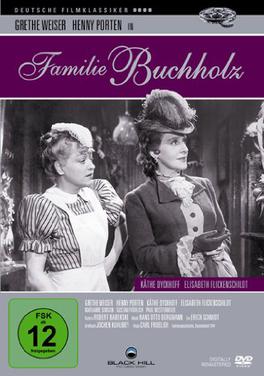
The Buchholz Family is a 1944 German drama film directed by Carl Froelich and starring Henny Porten, Paul Westermeier, and Käthe Dyckhoff. Based on an 1884 novel by Julius Stinde, it is a family chronicle set in late nineteenth century Berlin.. The same year saw the release of a second part Marriage of Affection. It was shot at the Tempelhof Studios in Berlin. The film's sets were designed by the art director Walter Haag.
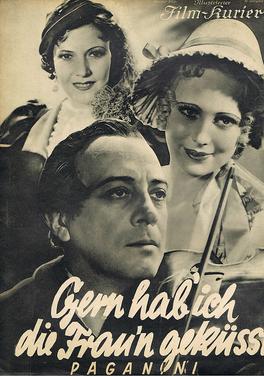
Paganini or I Liked Kissing Women is a 1934 German operetta film directed by E. W. Emo and starring Iván Petrovich, Eliza Illiard, and Theo Lingen. It is an adaptation of Franz Lehár's 1925 operetta Paganini.
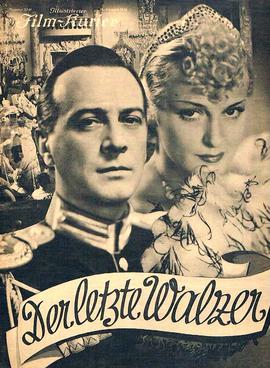
The Last Waltz is a 1934 German operetta film directed by Georg Jacoby, and starring Ernst Dumcke, Max Gülstorff, and Iván Petrovich. It is based on the 1920 operetta The Last Waltz by Oscar Straus. It was remade in English in 1936.

Covered Tracks is a 1938 German historical drama film directed by Veit Harlan and starring Kristina Söderbaum, Philip Dorn, and Charlotte Schultz. It was shot at the EFA Studios in Berlin's Halensee and the Bavaria Studios in Munich with location shooting taking place in both cities as well as in Paris. The film's sets were designed by the art directors Karl Haacker and Hermann Warm. It premiered at the Venice Film Festival.
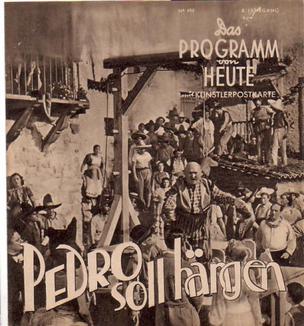
Pedro Will Hang is a 1941 German adventure film directed by Veit Harlan and starring Gustav Knuth, Heinrich George and Maria Landrock.
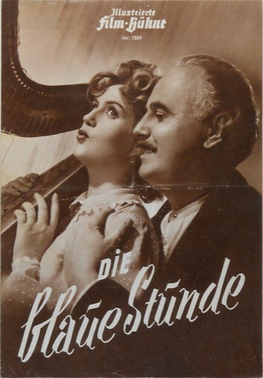
The Blue Hour is a 1953 West German comedy film directed by Veit Harlan and starring Kristina Söderbaum, Hans Nielsen and Kurt Kreuger. Production began on the film in October 1952. It was shot at the Göttingen Studios and on location on the island of Capri. The film's sets were designed by the art director Walter Haag. Because of public protests against his wartime role as a Nazi filmmaker, Harlan considered turning over the project to his colleague Geza von Bolvary but eventually decided to direct it himself.
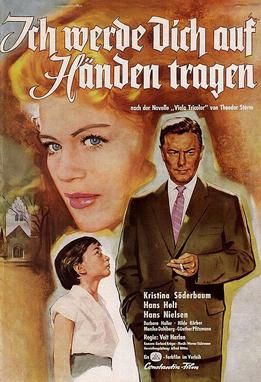
I'll Carry You in My Arms or I'll Carry You on My Hands is a 1958 West German drama film directed by Veit Harlan and starring Kristina Söderbaum, Hans Holt and Hans Nielsen. It was based on the novella Viola Tricolor by Theodor Storm, which had previously been made in 1937 as Serenade. It was the final film of Harlan's career.
My Life for Maria Isabella is a 1935 German drama film directed by Erich Waschneck and starring Viktor de Kowa, Maria Andergast and Peter Voß. It is a military drama, the Maria Isabella of the title being the name of a regiment. Heavy cuts were imposed by the censors because of fears the film's mutiny scenes were too attractively portrayed. Critics were not impressed by the casting of Viktor de Kowa, known for his light musical comedy roles, as the film's hero.

The Red Rider is a 1922 dramatic novel by the Austrian writer Franz Xaver Kappus.

Central Rio is a 1939 German crime film directed by Erich Engels and starring Leny Marenbach, Camilla Horn and Ita Rina.

Meier Helmbrecht is a 1928 play by the German writer Eugen Ortner. A historical tragedy set around 1250, it was first staged at the Munich Kammerspiele. It was subsequently staged less successfully at the Staatliches Schauspielhaus in Berlin with a cast including Veit Harlan and Friedrich Kayßler.

Stradivari is a 1935 German drama film directed by Géza von Bolváry and starring Gustav Fröhlich, Sybille Schmitz and Harald Paulsen.


















